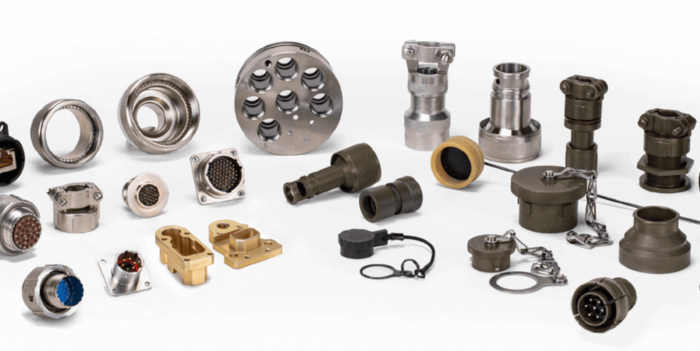
Capital Flow into the Automotive Industry is Surging
The Significant Industry Transformation is Underway
The auto industry is undergoing a remarkable transformation driven by several key trends. From electric and hybrid vehicles to autonomous driving and advanced connectivity, these trends are revolutionizing the industry, pushing automakers to reimagine their business models and invest in groundbreaking technologies. These transformational shifts in the industry are driving record investments in new manufacturing plants, battery plants, as well as research and development of new technologies to support the changes in the industry. There will be “breakthrough” winners from this change and there will be some companies left behind. One thing seems certain, if you aren’t investing big today, you won’t be as relevant in the future. Is this rush to electric vehicles justified in the market? Listed below are key trends that all require significant consideration and investment:
1. Electric and Hybrid Vehicles: A Paradigm Shift in Motion
The shift towards electric and hybrid vehicles has compelled automakers to overhaul their strategies, putting sustainability at the forefront. This trend is driving substantial investments in research and development, with manufacturers vying to produce vehicles boasting extended ranges and swift charging capabilities. Moreover, the rise of electric vehicles is propelling the advancement of battery technology, promising to reshape the entire industry and reduce our reliance on fossil fuels. The global automotive industry is poised to spend $526 billion in new capital investment through 2026 according to a study conducted by the consulting firm AlixPartners. While the transformation from internal combustion engines to electric vehicles has some naysayers, some recent regulations have added to the acceleration of this shift in the U.S. At the federal level, the Inflation Reduction Act has pushed significant incentives toward the electric vehicle market. This is expected to drive EV vehicle sales. California has passed its Advanced Clean Cars Act II (ACC II). This act has mandated 100 percent EV sales in California by 2035. While this represents one state, it is a significant end market for auto manufacturers, and it will be a catalyst to heavily invest in EVs. Producing both ICE and EV models will prove too costly for many, which will force the change to EVs.
2. Autonomous Driving: Redefining Mobility as We Know It
Autonomous driving technology has emerged as a game-changer in the auto industry, challenging conventional notions of driving and safety. Automakers and other companies are spending billions in their effort in the development of self-driving cars, aiming to bring fully autonomous vehicles to the market. While the potential benefits include a significant reduction in accidents and traffic congestion, the rapid progress of autonomous driving raises critical questions around liability and potential job displacement in the transportation sector. The complexities around the development of autonomous driving are significant. To some, they seem insurmountable. There are many different applications for autonomy. Autonomy can be utilized in confined environments such as manufacturing plants, security, construction, logistics and other industries. That said, the prize is to get full level 5 autonomy for the overall consumer. The upside of being successful in this effort is transformational and worth the significant investment. For that reason alone, companies and investors are willing to continue funding this pursuit. While the shift to EVs is transformational, the holy grail for economic impact, profitability, and a true change in mobility will come from autonomy.
3. Connected Cars: A New Era of Intelligent Mobility
The proliferation of connected cars is transforming the way we engage with our vehicles, turning them into sophisticated mobile devices. Connected cars refers to cars with internet connectivity. Connected vehicles can connect with internet driven devices, exchange data, download software, and provide passengers with WiFi. With features like GPS, Wi-Fi, and Bluetooth becoming standard, cars can now seamlessly communicate with one another, infrastructure, and the driver. This remarkable trend has paved the way for innovative services such as ride-sharing and car-sharing, revolutionizing urban mobility and paving the path towards more efficient and sustainable transportation systems. While a lot of attention is paid to EVs and autonomous driving, the impact and shift in automotive related to connected cars is significant. The ongoing investment in this sector will be felt by consumers and provide significant changes to the driving experience.
4. Artificial Intelligence: Unleashing the Power of Intelligent Transportation
The integration of artificial intelligence (AI) in the auto industry is revolutionizing driving experiences and maintenance practices. AI powers self-driving cars, enabling them to analyze and respond to complex road conditions with unmatched precision. Moreover, predictive maintenance powered by AI algorithms helps optimize vehicle performance and reduce breakdowns. Furthermore, intelligent traffic management systems utilize AI to enhance safety and efficiency on roads, making transportation more seamless and secure. AI is currently utilized in the automotive sector from the manufacturing process through the driver experience. As AI continues to develop, it will have a significant impact on the industry and allow for the other transformational changes to occur at a much faster pace.
5. Augmented Reality: Elevating the Driving Experience
Augmented reality (AR) is reshaping the way we interact with our cars, enhancing the driving experience through informative overlays on windshields. By seamlessly integrating information like speed, directions, and real-time traffic updates, AR technology improves situational awareness and promotes safer driving practices. This trend has the potential to revolutionize the driving experience, making it more enjoyable, immersive, and engaging. AR is still in its early stages within the industry. That said, there are key differentiators driven by AR that are capturing the attention of the OE’s. This will drive creativity and the driver experience going forward.
Conclusion
The auto industry is currently undergoing a transformative period, driven by trends that are revolutionizing mobility. From the rapid adoption of electric and hybrid vehicles to the relentless pursuit of autonomous driving, the industry is poised for significant advancements. The integration of connected car technologies, artificial intelligence, and augmented reality further elevates the driving experience and sets the stage for a future where transportation is safer, more efficient, and environmentally sustainable. As the industry embraces these trends, it faces challenges and opportunities that will shape the automotive landscape for years to come. The capital requirement is just one of the many hurdles facing the participants in this sector. The industry is changing faster than it has in decades. The decisions each company makes on investments in these areas could be life or death decisions. This is an exciting time for the industry and one that will challenge the best and brightest leaders within the industry.
Related Professionals
Get in Touch
Tell us a little about yourself and we will get in touch as soon as we can.

 Back to news articles
Back to news articles



